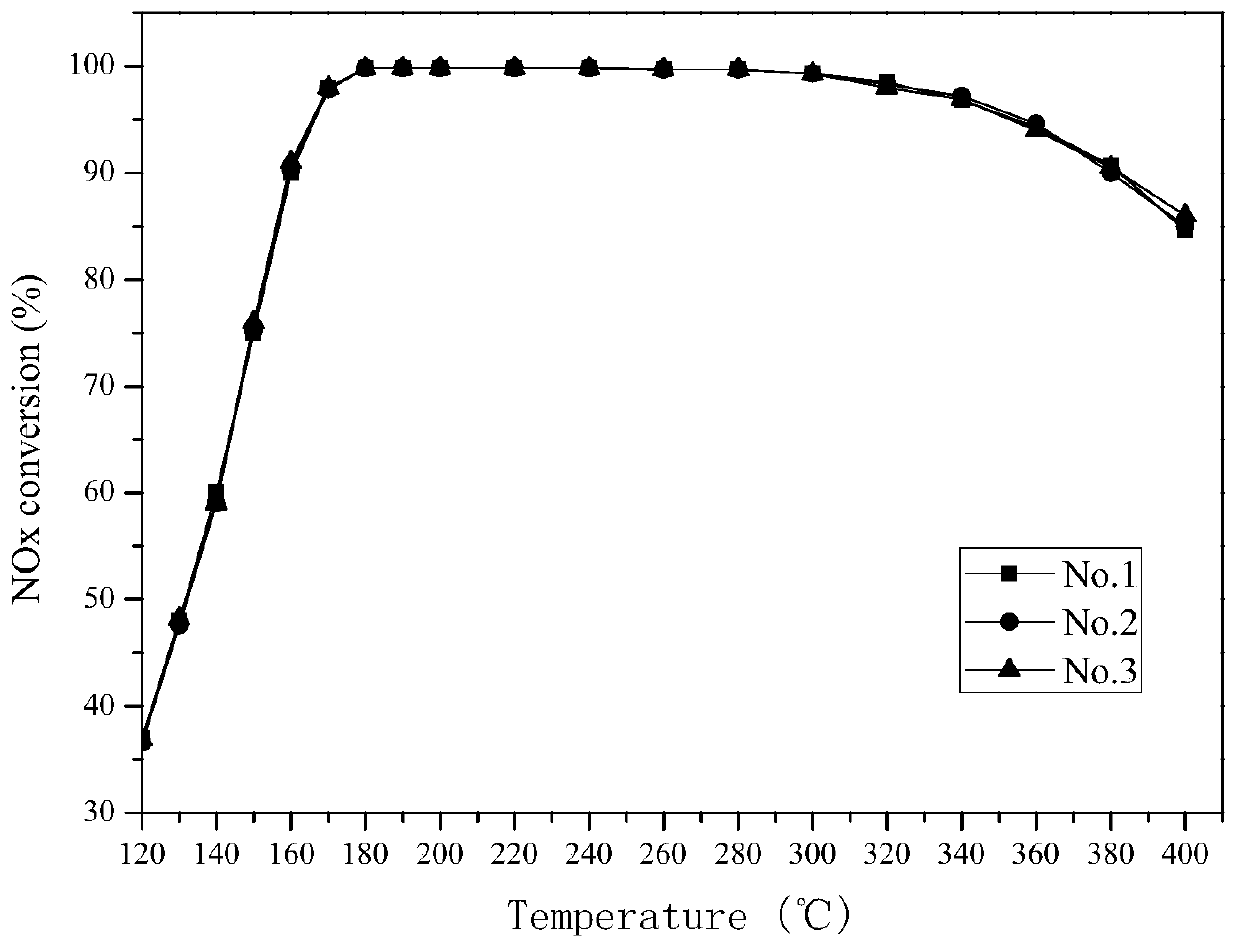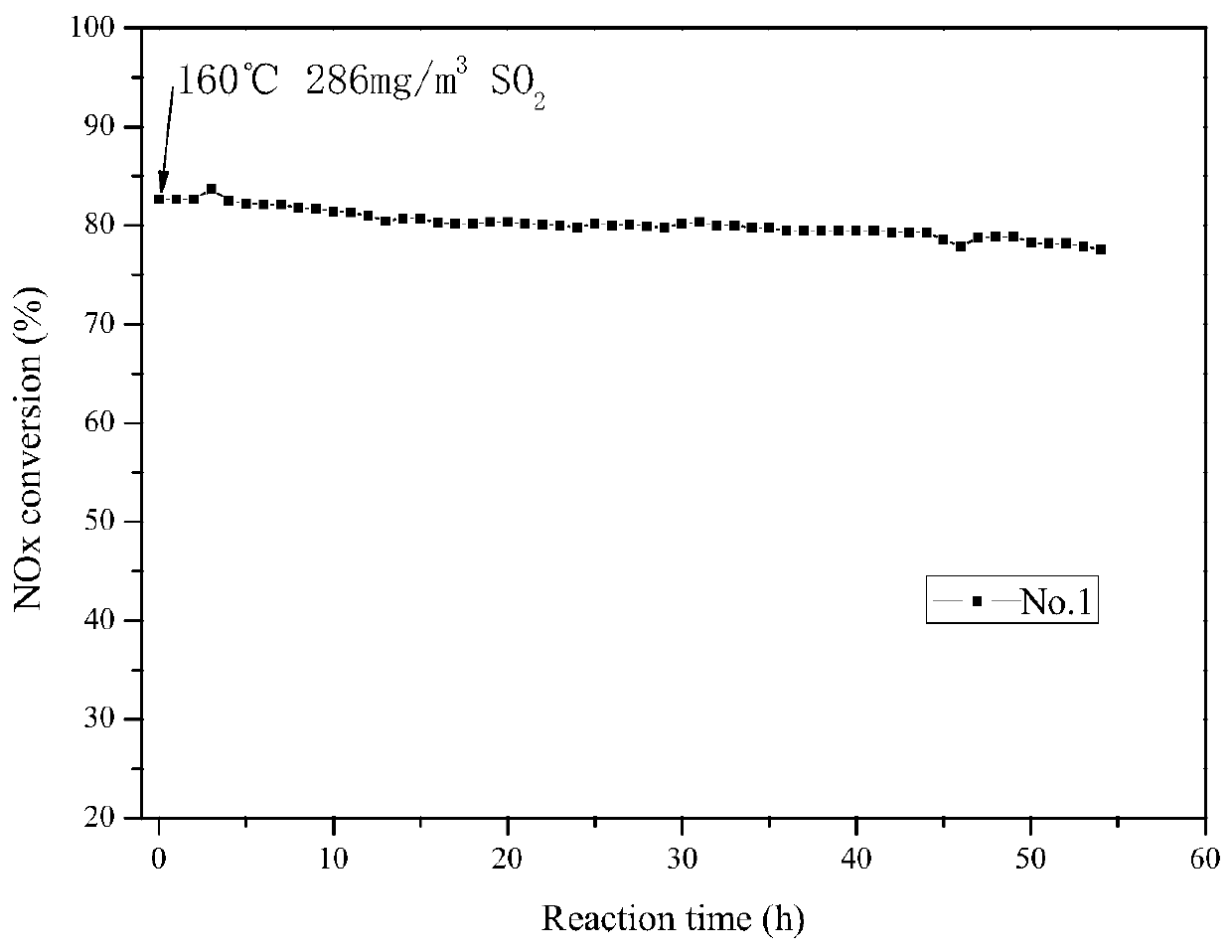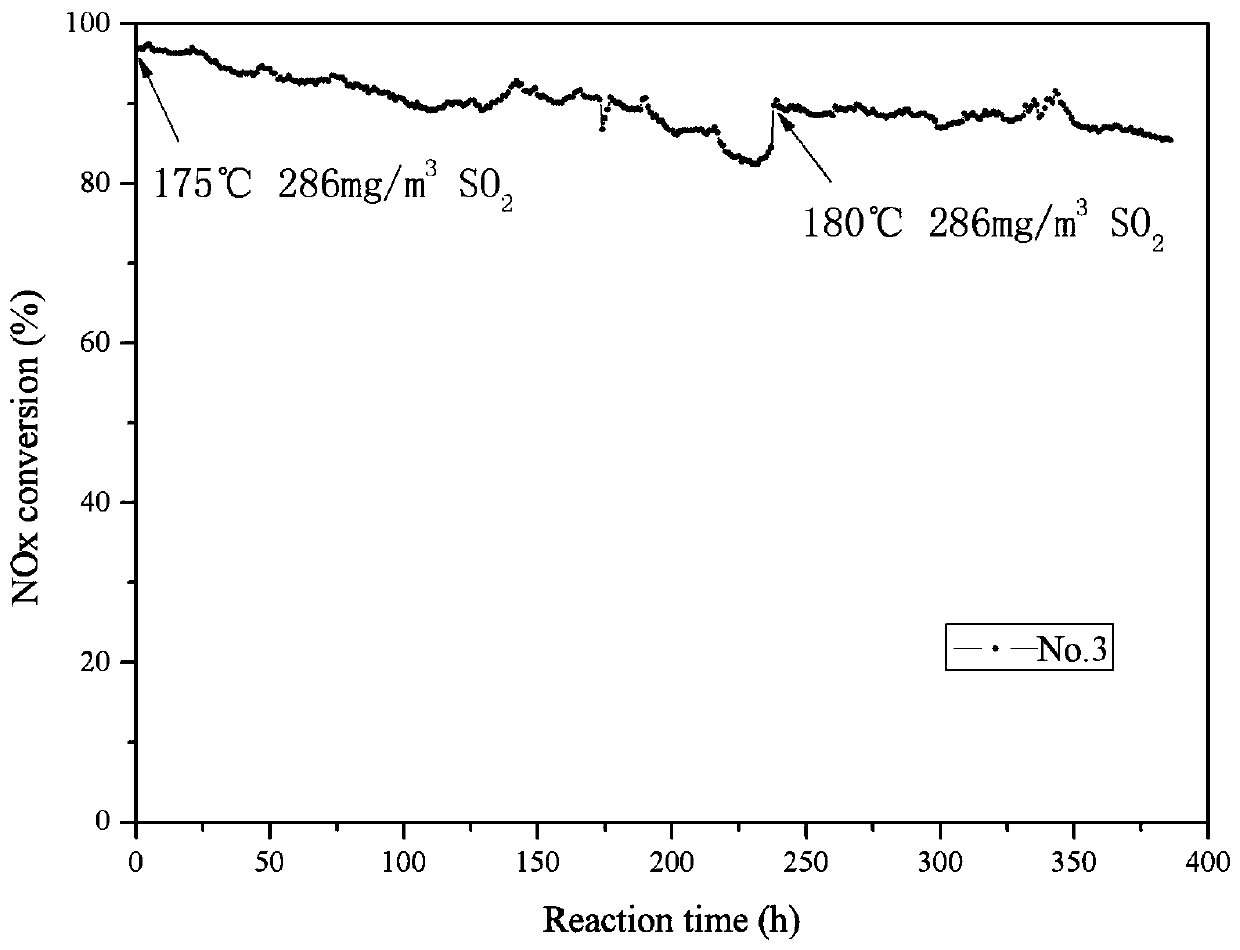Low-temperature sulfur-resistant molybdenum-vanadium-titanium denitration catalyst as well as preparation method and application thereof
A denitration catalyst and catalyst technology, applied in chemical instruments and methods, physical/chemical process catalysts, separation methods, etc., can solve problems such as shortening the service life of catalysts, achieve excellent low temperature sulfur resistance, short preparation time, and improve service life. Effect
- Summary
- Abstract
- Description
- Claims
- Application Information
AI Technical Summary
Problems solved by technology
Method used
Image
Examples
Embodiment 1
[0030] Dissolve 3g of oxalic acid and 1g of ammonium metavanadate in 40g of deionized water, stir and dissolve at 50°C until it becomes a blue clear solution; mix 1.5g of ammonium molybdate, 0.3g of triammonium phosphate and 0.1g Ruthenium trichloride was added to the resulting solution in turn, and continued to stir at 50°C until it completely dissolved until it became a black solution; 20gTiO 2 The carrier is slowly added to the above solution, and stirred at 40°C until it becomes viscous; the obtained viscous solid is dried in an oven, then put into a muffle furnace, and heated at 250°C Calcined for 2 hours, then calcined at 450°C for 5 hours, cooled naturally to room temperature, sieved to 20-120 mesh for later use, and obtained 1# catalyst.
Embodiment 2
[0032] Dissolve 3g of oxalic acid and 2g of ammonium metavanadate in 80g of deionized water, and stir to dissolve at 50°C until it becomes a blue clear solution; 3g of ammonium molybdate, 0.6g of triammonium phosphate and 0.25g of Add ruthenium chloride to the resulting solution in turn, continue to stir at 50°C, and dissolve all until it becomes a black solution; add 40gTiO 2 The carrier is slowly added to the above solution, and stirred at 40°C until it becomes viscous; the obtained viscous solid is dried in an oven, then put into a muffle furnace, and heated at 250°C Calcined for 2 hours, then calcined at 450°C for 5 hours, cooled naturally to room temperature, sieved to 20-120 mesh for later use, and obtained 2# catalyst.
Embodiment 3
[0034] Dissolve 6g of oxalic acid and 2g of ammonium metavanadate in 80g of deionized water, and stir to dissolve at 50°C until it becomes a blue clear solution; 3g of ammonium molybdate, 0.6g of triammonium phosphate and 0.25g of Add ruthenium chloride to the resulting solution one by one, continue to stir at 50°C until it completely dissolves until it turns into a black solution; slowly add 40g of TiO2 carrier to the above solution, and stir at 40°C until it becomes viscous The viscous solid obtained is first put into an oven for drying, then put into a muffle furnace, and bake at 250°C for 2 hours, then at 450°C for 5 hours, and cool to room temperature naturally. Sieve to 20-120 mesh for later use to obtain 3# catalyst.
PUM
| Property | Measurement | Unit |
|---|---|---|
| denitrification rate | aaaaa | aaaaa |
| denitrification rate | aaaaa | aaaaa |
Abstract
Description
Claims
Application Information
 Login to View More
Login to View More - R&D
- Intellectual Property
- Life Sciences
- Materials
- Tech Scout
- Unparalleled Data Quality
- Higher Quality Content
- 60% Fewer Hallucinations
Browse by: Latest US Patents, China's latest patents, Technical Efficacy Thesaurus, Application Domain, Technology Topic, Popular Technical Reports.
© 2025 PatSnap. All rights reserved.Legal|Privacy policy|Modern Slavery Act Transparency Statement|Sitemap|About US| Contact US: help@patsnap.com



